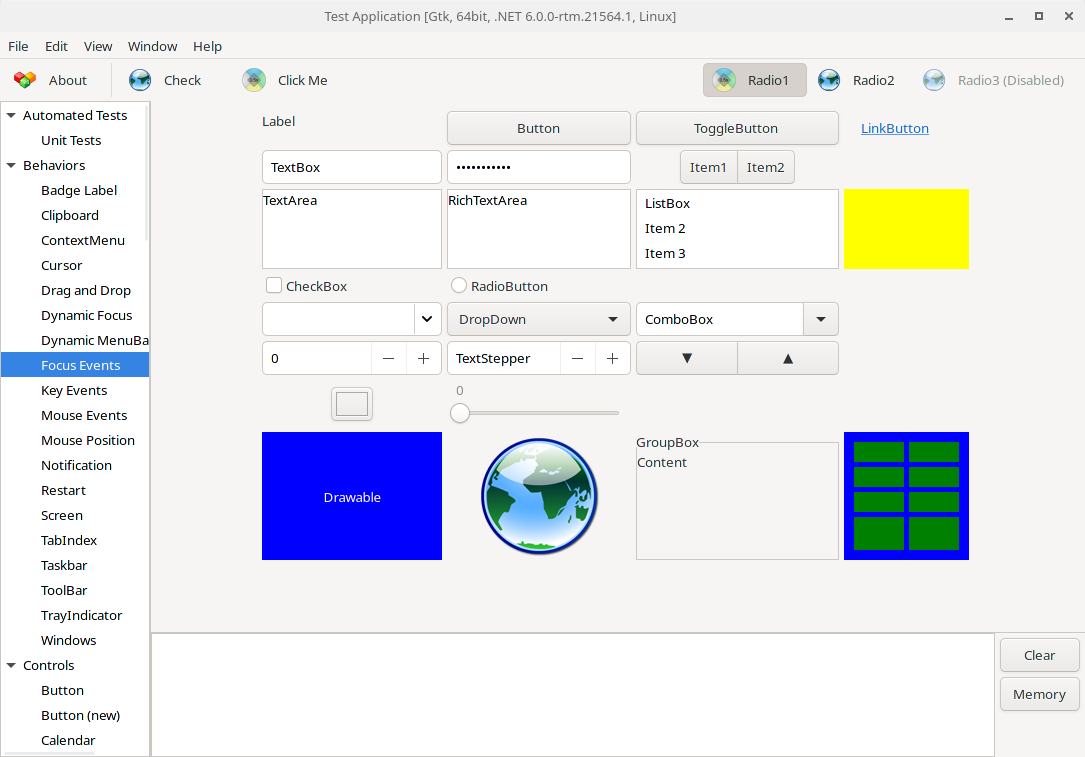目录
一、概述
1.1原理
1.2实现步骤
1.3应用场景
二、代码实现
2.1关键函数
2.1.1 添加高斯噪声实现
2.1.2 可视化函数
2.2完整代码
三、实现效果
PCL点云算法汇总及实战案例汇总的目录地址链接:
PCL点云算法与项目实战案例汇总(长期更新)
一、概述
给点云添加高斯噪声 是一种模拟真实传感器噪声的方法,通常用于评估算法在噪声环境下的鲁棒性。通过向点云中的点随机添加高斯噪声,可以增加点云数据的随机性,从而测试算法对噪声的抗干扰能力。
1.1原理
为了给点云添加随机噪声,常用的噪声类型有:
- 高斯噪声:根据正态分布生成噪声,通常会指定均值和标准差。常用于模拟传感器测量时的误差。
- 均匀噪声:在某个范围内随机生成噪声,适合模拟空间中随机误差的情况。
高斯噪声公式:
其中 𝑁(𝜇,𝜎2)为均值为 𝜇、标准差为 𝜎 的高斯噪声。
1.2实现步骤
- 读取点云数据。
- 生成随机噪声(高斯噪声或均匀噪声)。
- 将噪声加到点云的坐标上。
- 可视化原始点云和添加噪声后的点云。
1.3应用场景
- 算法评估:测试算法在有噪声的情况下能否正常工作,如点云配准、特征提取等。
- 数据增强:用于增强训练数据集,提升机器学习模型的鲁棒性。
- 模拟真实场景:在传感器测量中模拟现实中的噪声误差。
二、代码实现
2.1关键函数
2.1.1 添加高斯噪声实现
通过给每个点的坐标添加高斯噪声,生成噪声点云。
#include <pcl/io/pcd_io.h>
#include <pcl/point_types.h>
#include <random>
// 添加高斯噪声
pcl::PointCloud<pcl::PointXYZ>::Ptr addGaussianNoise(
pcl::PointCloud<pcl::PointXYZ>::Ptr cloud, // 输入点云
float mean, // 噪声的均值
float stddev // 噪声的标准差
)
{
// 随机数生成器
std::default_random_engine generator;
std::normal_distribution<float> distribution(mean, stddev);
// 生成带噪声的点云
pcl::PointCloud<pcl::PointXYZ>::Ptr noisy_cloud(new pcl::PointCloud<pcl::PointXYZ>(*cloud)); // 拷贝原始点云
for (auto& point : noisy_cloud->points)
{
point.x += distribution(generator); // 为x坐标添加噪声
point.y += distribution(generator); // 为y坐标添加噪声
point.z += distribution(generator); // 为z坐标添加噪声
}
return noisy_cloud; // 返回带噪声的点云
}
2.1.2 可视化函数
使用 PCL 可视化库展示原始点云和添加噪声后的点云。
#include <pcl/visualization/pcl_visualizer.h>
// 可视化原始点云和添加噪声后的点云
void visualizePointClouds(
pcl::PointCloud<pcl::PointXYZ>::Ptr cloud, // 原始点云
pcl::PointCloud<pcl::PointXYZ>::Ptr noisy_cloud // 添加噪声后的点云
)
{
// 创建可视化器
pcl::visualization::PCLVisualizer::Ptr viewer(new pcl::visualization::PCLVisualizer("Noisy Point Cloud Viewer"));
// 创建视口1,显示原始点云
int vp_1;
viewer->createViewPort(0.0, 0.0, 0.5, 1.0, vp_1); // 创建左侧窗口
viewer->setBackgroundColor(1.0, 1.0, 1.0, vp_1); // 设置白色背景
viewer->addText("Original Point Cloud", 10, 10, "vp1_text", vp_1); // 添加标题
// 设置原始点云的颜色为红色
pcl::visualization::PointCloudColorHandlerCustom<pcl::PointXYZ> cloud_color_handler(cloud, 255, 0, 0); // 红色
viewer->addPointCloud<pcl::PointXYZ>(cloud, cloud_color_handler, "original_cloud", vp_1); // 添加原始点云
// 创建视口2,显示添加噪声后的点云
int vp_2;
viewer->createViewPort(0.5, 0.0, 1.0, 1.0, vp_2); // 创建右侧窗口
viewer->setBackgroundColor(0.98, 0.98, 0.98, vp_2); // 设置浅灰色背景
viewer->addText("Noisy Point Cloud", 10, 10, "vp2_text", vp_2); // 添加标题
// 设置带噪声点云的颜色为绿色
pcl::visualization::PointCloudColorHandlerCustom<pcl::PointXYZ> noisy_cloud_color_handler(noisy_cloud, 0, 255, 0); // 绿色
viewer->addPointCloud<pcl::PointXYZ>(noisy_cloud, noisy_cloud_color_handler, "noisy_cloud", vp_2); // 添加带噪声点云
// 设置点的大小(可选)
viewer->setPointCloudRenderingProperties(pcl::visualization::PCL_VISUALIZER_POINT_SIZE, 2, "original_cloud", vp_1);
viewer->setPointCloudRenderingProperties(pcl::visualization::PCL_VISUALIZER_POINT_SIZE, 2, "noisy_cloud", vp_2);
// 启动可视化循环
while (!viewer->wasStopped())
{
viewer->spinOnce(100); // 刷新可视化器
}
}
2.2完整代码
// C++头文件
#include <iostream>
// PCL头文件
#include <pcl/io/pcd_io.h>
#include <pcl/point_types.h>
#include <pcl/visualization/pcl_visualizer.h>
#include <random> // 随机数生成
// 添加高斯噪声函数
pcl::PointCloud<pcl::PointXYZ>::Ptr addGaussianNoise(
pcl::PointCloud<pcl::PointXYZ>::Ptr cloud, // 输入点云
float mean, // 噪声的均值
float stddev // 噪声的标准差
)
{
// 随机数生成器
std::default_random_engine generator;
std::normal_distribution<float> distribution(mean, stddev);
// 生成带噪声的点云
pcl::PointCloud<pcl::PointXYZ>::Ptr noisy_cloud(new pcl::PointCloud<pcl::PointXYZ>(*cloud)); // 拷贝原始点云
for (auto& point : noisy_cloud->points)
{
point.x += distribution(generator); // 为x坐标添加噪声
point.y += distribution(generator); // 为y坐标添加噪声
point.z += distribution(generator); // 为z坐标添加噪声
}
return noisy_cloud; // 返回带噪声的点云
}
// 可视化原始点云和添加噪声后的点云
void visualizePointClouds(
pcl::PointCloud<pcl::PointXYZ>::Ptr cloud, // 原始点云
pcl::PointCloud<pcl::PointXYZ>::Ptr noisy_cloud // 添加噪声后的点云
)
{
// 创建可视化器
pcl::visualization::PCLVisualizer::Ptr viewer(new pcl::visualization::PCLVisualizer("Noisy Point Cloud Viewer"));
// 创建视口1,显示原始点云
int vp_1;
viewer->createViewPort(0.0, 0.0, 0.5, 1.0, vp_1); // 创建左侧窗口
viewer->setBackgroundColor(1.0, 1.0, 1.0, vp_1); // 设置白色背景
viewer->addText("Original Point Cloud", 10, 10, "vp1_text", vp_1); // 添加标题
// 设置原始点云的颜色为红色
pcl::visualization::PointCloudColorHandlerCustom<pcl::PointXYZ> cloud_color_handler(cloud, 255, 0, 0); // 红色
viewer->addPointCloud<pcl::PointXYZ>(cloud, cloud_color_handler, "original_cloud", vp_1); // 添加原始点云
// 创建视口2,显示添加噪声后的点云
int vp_2;
viewer->createViewPort(0.5, 0.0, 1.0, 1.0, vp_2); // 创建右侧窗口
viewer->setBackgroundColor(0.98, 0.98, 0.98, vp_2); // 设置浅灰色背景
viewer->addText("Noisy Point Cloud", 10, 10, "vp2_text", vp_2); // 添加标题
// 设置带噪声点云的颜色为绿色
pcl::visualization::PointCloudColorHandlerCustom<pcl::PointXYZ> noisy_cloud_color_handler(noisy_cloud, 0, 255, 0); // 绿色
viewer->addPointCloud<pcl::PointXYZ>(noisy_cloud, noisy_cloud_color_handler, "noisy_cloud", vp_2); // 添加带噪声点云
// 设置点的大小(可选)
viewer->setPointCloudRenderingProperties(pcl::visualization::PCL_VISUALIZER_POINT_SIZE, 2, "original_cloud", vp_1);
viewer->setPointCloudRenderingProperties(pcl::visualization::PCL_VISUALIZER_POINT_SIZE, 2, "noisy_cloud", vp_2);
// 启动可视化循环
while (!viewer->wasStopped())
{
viewer->spinOnce(100); // 刷新可视化器
}
}
// 保存噪声点云到文件
void saveNoisyPointCloud(pcl::PointCloud<pcl::PointXYZ>::Ptr noisy_cloud, const std::string& filename)
{
pcl::io::savePCDFileBinary(filename, *noisy_cloud); // 保存为二进制 PCD 格式
std::cout << "带噪声的点云已保存至: " << filename << std::endl;
}
int main(int argc, char** argv)
{
// ------------------------------读取点云数据---------------------------------
pcl::PointCloud<pcl::PointXYZ>::Ptr cloud(new pcl::PointCloud<pcl::PointXYZ>);
if (pcl::io::loadPCDFile("bunny.pcd", *cloud) < 0)
{
PCL_ERROR("Could not read file\n");
return (-1); // 返回错误
}
// -------------------------------添加高斯噪声---------------------------------
float mean = 0.001f; // 噪声均值
float stddev = 0.005f; // 噪声标准差
pcl::PointCloud<pcl::PointXYZ>::Ptr noisy_cloud = addGaussianNoise(cloud, mean, stddev); // 添加噪声
// -------------------------------保存噪声点云---------------------------------
//saveNoisyPointCloud(noisy_cloud, "noisy_bunny.pcd"); // 保存带噪声的点云
// ------------------------------可视化原始点云和带噪声的点云---------------------------------
visualizePointClouds(cloud, noisy_cloud); // 调用可视化函数
return 0;
}
三、实现效果





















